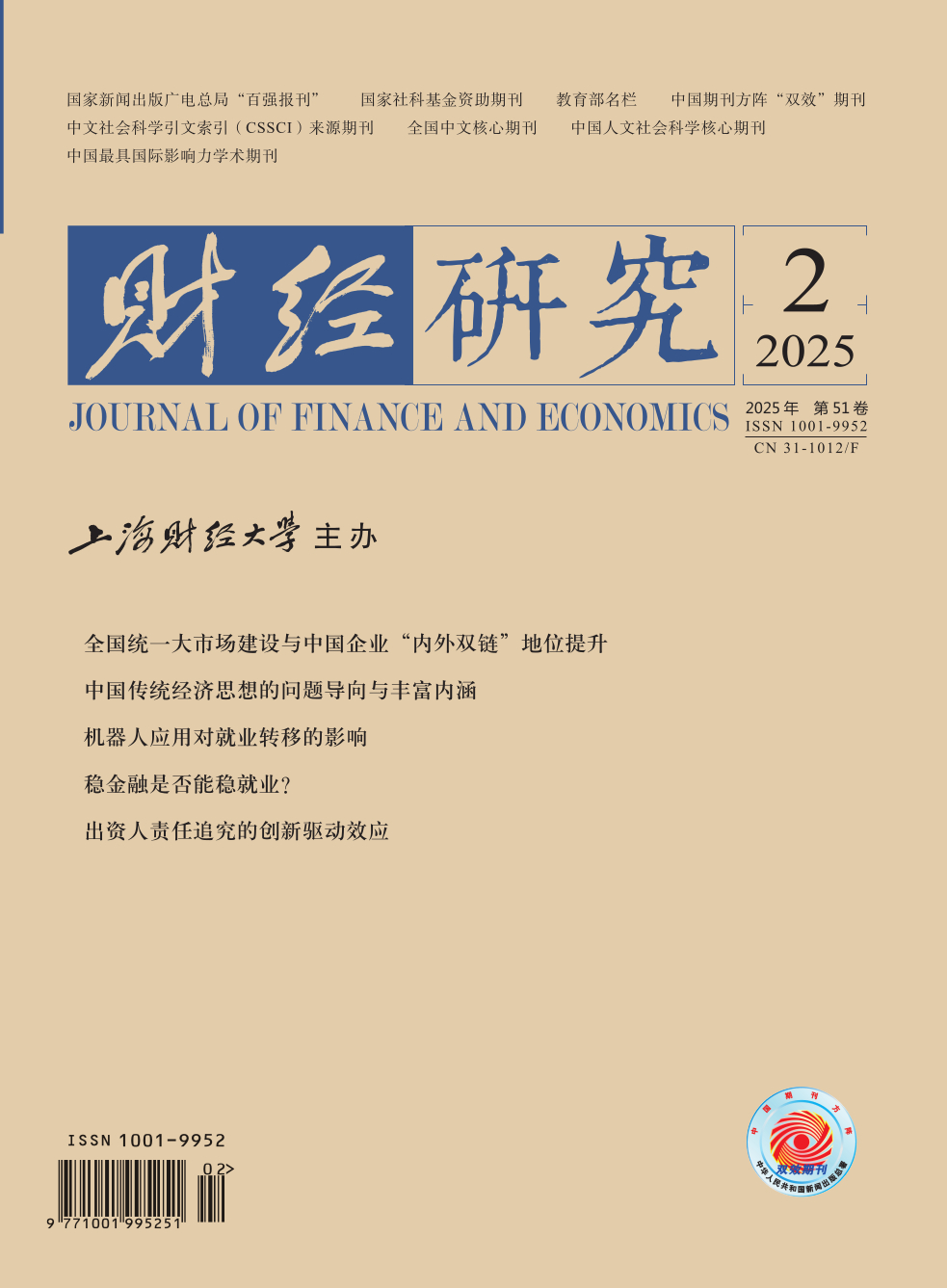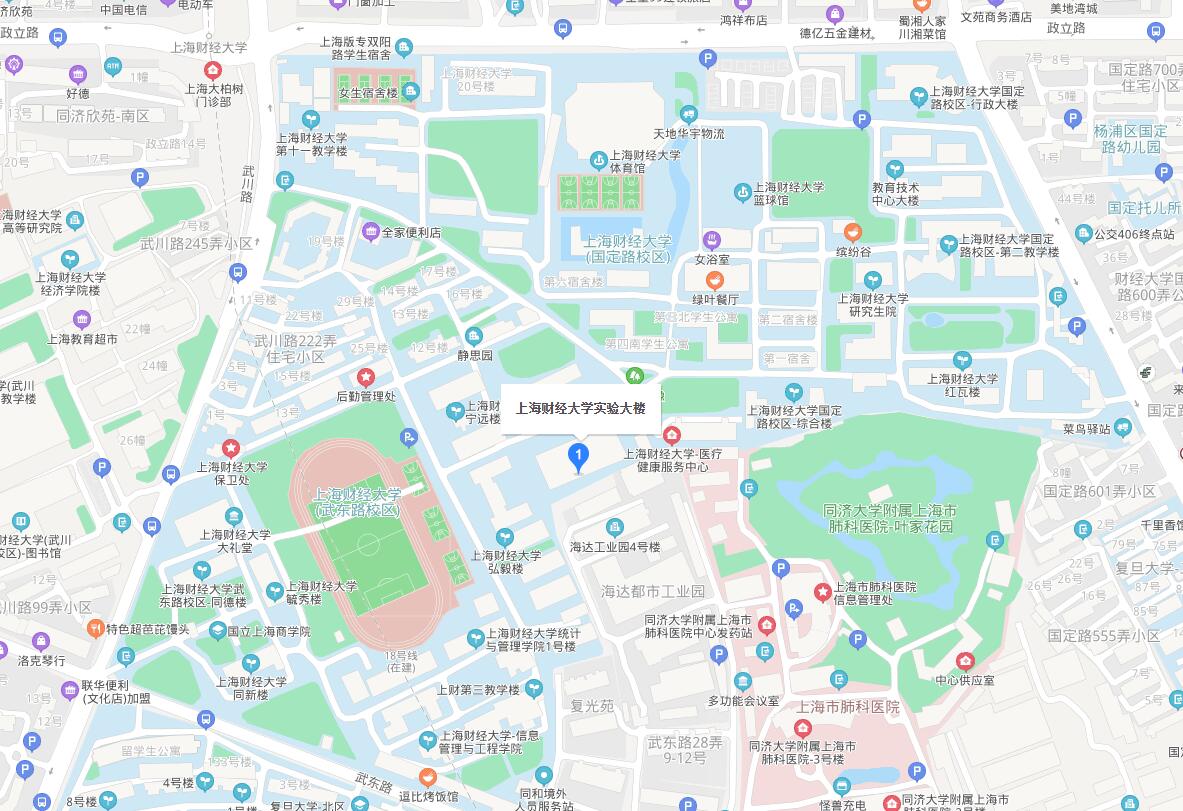在经济新常态和贸易摩擦等挑战叠加的背景下,稳就业成为保障基本民生和维护经济社会稳定的关键议题。文章基于2010—2021年沪深A股上市公司数据,系统考察了供应链稳定性的稳就业效应及其内在机制。研究发现,供应链稳定性的提升显著促进了企业劳动雇佣规模的扩大。机制检验表明,这一效应主要通过增加商业信用供给、提升银行信贷可获得性以及降低企业经营风险三个渠道实现。异质性分析显示,供应链稳定性对劳动雇佣的促进作用在中小企业和抵押品规模较小的企业中更加显著。从供应链关系特征来看,当企业间依赖程度较高时,供应链稳定性的稳就业效应更加突出;同时,供应商稳定性和客户稳定性均能显著提升企业劳动雇佣水平。进一步研究发现,供应链稳定性不仅增加了企业劳动雇佣规模,还优化了劳动力结构,表现为对高学历和高技能劳动力需求的增加。此外,供应链稳定性通过扩大劳动雇佣规模提升了企业全要素生产率,推动了企业高质量发展。文章深入揭示了供应链稳定性影响企业劳动雇佣的具体机制,为政府部门从稳定供应链视角推进稳就业提供了重要的经验证据和决策参考。
供应链稳定性能否实现稳就业?
摘要
参考文献
4 马新啸,汤泰劼,郑国坚. 国有企业混合所有制改革与人力资本结构调整——基于高层次人才配置的视角[J]. 财贸经济,2020,(12):101−116.
6 王迪,刘祖基,赵泽朋. 供应链关系与银行借款——基于供应商/客户集中度的分析[J]. 会计研究,2016,(10):42−49. DOI:10.3969/j.issn.1003-2886.2016.10.006
11 余明桂,王空. 地方政府债务融资、挤出效应与企业劳动雇佣[J]. 经济研究,2022,(2):58−72.
12 余明桂,王俐璇,赵文婷,等. 专利质押、融资约束与企业劳动雇佣[J]. 数量经济技术经济研究,2022,(9):70−93.
15 张树山,谷城. 供应链数字化与供应链韧性[J]. 财经研究,2024,(7):21−34.
17 邹静娴,贾珅,邱雅静,等. 经营风险与企业杠杆率[J]. 金融研究,2020,(12):20−39.
18 Acemoglu D,Restrepo P. The race between man and machine:Implications of technology for growth,factor shares,and employment[J]. American Economic Review,2018,108(6):1488−1542. DOI:10.1257/aer.20160696
19 Acemoglu D,Restrepo P. Robots and jobs:Evidence from us labor markets[J]. Journal of Political Economy,2020,128(6):2188−2244. DOI:10.1086/705716
20 Baghersad M,Zobel C W. Assessing the extended impacts of supply chain disruptions on firms:An empirical study[J]. International Journal of Production Economics,2021,231:107862. DOI:10.1016/j.ijpe.2020.107862
21 Caggese A,Cuñat V,Metzger D. Firing the wrong workers:Financing constraints and labor misallocation[J]. Journal of Financial Economics,2019,133(3):589−607. DOI:10.1016/j.jfineco.2017.10.008
22 Chu Y Q,Tian X,Wang W Y. Corporate innovation along the supply chain[J]. Management Science,2019,65(6):2445−2466. DOI:10.1287/mnsc.2017.2924
23 Cuñat V. Trade credit:Suppliers as debt collectors and insurance providers[J]. The Review of Financial Studies,2007,20(2):491−527. DOI:10.1093/rfs/hhl015
24 Fabbri D,Klapper L F. Bargaining power and trade credit[J]. Journal of Corporate Finance,2016,41:66−80. DOI:10.1016/j.jcorpfin.2016.07.001
25 Granovetter M. Economic action and social structure:The problem of embeddedness[J]. American Journal of Sociology,1985,91(3):481−510. DOI:10.1086/228311
26 Hendricks K B,Singhal V R. Association between supply chain glitches and operating performance[J]. Management Science,2005,51(5):695−711. DOI:10.1287/mnsc.1040.0353
27 Herrendorf B,Rogerson R,Valentinyi Á. Two perspectives on preferences and structural transformation[J]. American Economic Review,2013,103(7):2752−2789. DOI:10.1257/aer.103.7.2752
28 Hertzel M G,Li Z,Officer M S,et al. Inter-firm linkages and the wealth effects of financial distress along the supply chain[J]. Journal of Financial Economics,2008,87(2):374−387. DOI:10.1016/j.jfineco.2007.01.005
29 Jüttner U,Maklan S. Supply chain resilience in the global financial crisis:An empirical study[J]. Supply Chain Manage- ment:An International Journal,2011,16(4):246−259.
30 Jung B,Lee W J,Weber D P. Financial reporting quality and labor investment efficiency[J]. Contemporary Accounting Research,2014,31(4):1047−1076. DOI:10.1111/1911-3846.12053
31 Kaplan S N,Zingales L. Do investment-cash flow sensitivities provide useful measures of financing constraints?[J]. The Quarterly Journal of Economics,1997,112(1):169−215. DOI:10.1162/003355397555163
32 Korpeoglu C G,Körpeoğlu E,Cho S H. Supply chain competition:A market game approach[J]. Management Science,2020,66(12):5648−5664. DOI:10.1287/mnsc.2019.3511
33 Pandit S,Wasley C E,Zach T. Information externalities along the supply chain:The economic determinants of suppliers’ stock price reaction to their customers’ earnings announcements[J]. Contemporary Accounting Research,2011,28(4):1304−1343. DOI:10.1111/j.1911-3846.2011.01092.x
34 Xu N H,Li X R,Yuan Q B,et al. Excess perks and stock price crash risk:Evidence from China[J]. Journal of Corpo- rate Finance,2014,25:419−434. DOI:10.1016/j.jcorpfin.2014.01.006
引用本文
董浩, 闫晴. 供应链稳定性能否实现稳就业?[J]. 财经研究, 2025, 51(2): 123-137.
导出参考文献,格式为:





 241
241  196
196
